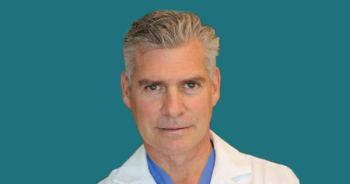
Patients Receiving Autologous Stem Cell Transplant After Chemical Burns Show Corneal Improvements
The phase 1/2 trial is opening its second phase of recruitment after being well-tolerated in the first 4 patients and demonstrating some vision improvements.
Cultivated autologous limbal epithelial cells (CALEC) transplant has demonstrated preliminary feasibility, including restored cornea surfaces or
“Our early results suggest that CALEC might offer hope to patients who had been left with untreatable vision loss and pain associated with major cornea injuries,” principal investigator and lead study author Ula Jurkunas, MD, associate director, Cornea Service at Mass Eye and Ear and associate professor of ophthalmology, Harvard Medical School, said in a statement.2 “Cornea specialists have been hindered by a lack of treatment options with a high safety profile to help our patients with chemical burns and injuries that render them unable to get an artificial cornea transplant. We are hopeful with further study, CALEC can one day fill this crucially needed treatment gap.”
LSC deficiency can result from chemical burns and other eye injuries and cause an irreversible loss of corneal surface cells.1 Patients with LSC deficiency experience permanent vision loss, pain, and discomfort in the affected eye, and cannot undergo artificial corneal transplant; the current standard of vison rehabilitation; without limbal cells and a healthy eye surface.
The 4 patients treated in the study had significant chemical burns in one eye. The CALEC transplant included removing stem cells from the patient’s healthy eye via a small biopsy, expanding and growing the cells on a graft at the Connell and O'Reilly Families Cell Manipulation Core Facility at Dana-Farber Cancer Institute for 2-to-3 weeks, and then transplanting them into the eye with corneal damage at the Mass Eye and Ear Institute. The CALEC project is led by Jerome Ritz, MD, Boston Children’s Hospital, led by Myriam Armant, PhD, and the JAEB Center for Health Research and is the first human study of a stem cell therapy to be funded by the National Eye Institute of the National Institutes of Health.
READ MORE:
The patients were followed for 12 months after transplant and experienced restored cornea surfaces, with 2 able to undergo a corneal transplant and 2 reporting significant improvements in vision without additional treatment. The second recruitment phase of the trial will include 18-month follow-up for the treated patients as well as a larger cohort. Data will cover primary endpoints of safety and feasibility, such as ocular infection, corneal perforation, graft detachment, adverse events, cell growth and viability, and culture contamination. Secondary outcome measures including corneal surface integrity, neovascularization, and symptoms will also be assessed.
“It was challenging to develop a process for creating limbal stem cell grafts that would meet the FDA’s strict regulatory requirements for tissue engineering,” Ritz, executive director, Connell and O’Reilly Families Cell Manipulation Core Facility, Dana-Farber and professor of medicine, Harvard Medical School, added.2 “Having developed and implemented this process, it was very gratifying to see encouraging clinical outcomes in the first cohort of patients enrolled on this clinical trial.”
Ritz and his coauthors wrote that despite long-lived research on autologous stem cell approaches for treating LSC deficiency and similar studies in Europe, no research from the United States (US) has successfully developed a manufacturing process and quality control tests that met FDA requirements or showed any clinical benefit.1 The authors concluded that this first use of CALEC in the US could serve as a steppingstone for establishing cellular therapy products as viable options for patients with LSC deficiency.
REFERENCES
1. Jurkunas UV, Yin J, Johns LK, et al. Cultivated autologous limbal epithelial cell (CALEC) transplantation: Development of manufacturing process and clinical evaluation of feasibility and safety. Sci. Adv. (2023) 9, eadg6470.doi: 10.1126/sciadv.adg6470
2. Cell therapy that repairs cornea damage with patient’s own stem cells achieves positive phase I trial results. News release. Massachusetts Eye and Ear Infirmary. August 18, 2023. https://www.eurekalert.org/news-releases/998500
Newsletter
Stay at the forefront of cutting-edge science with CGT—your direct line to expert insights, breakthrough data, and real-time coverage of the latest advancements in cell and gene therapy.












































